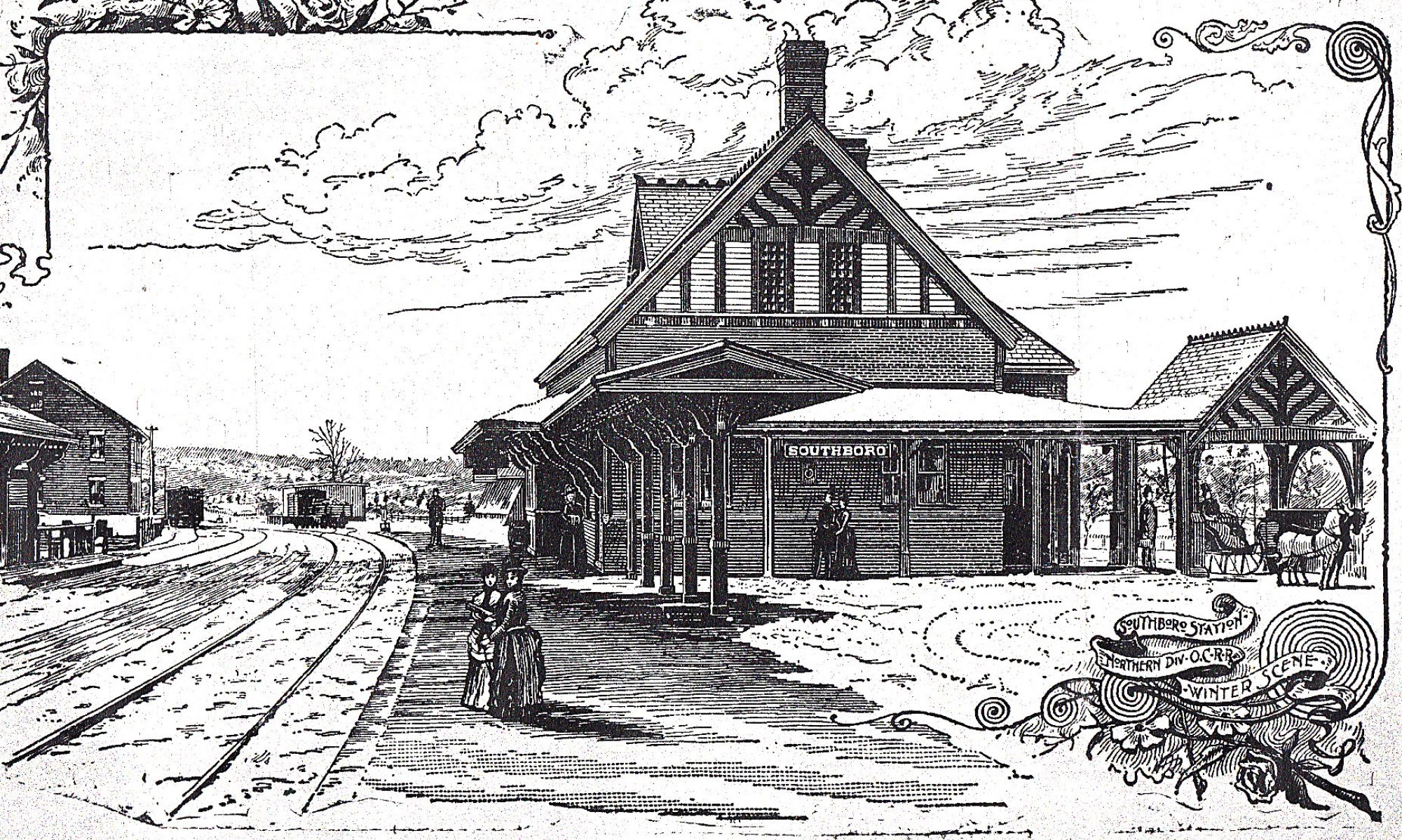I often think as I get in my car to travel the three or four minutes from my home to the museum, how long this trip would have taken a hundred years ago. Granted, I might have had a car in 1917, but more likely for Southborough, I would have had a horse, and saddling a horse and riding those few miles is a half-hour operation at best. Walking is about the same (you save the time of saddling and unsaddling) and biking was (and is) about 10 minutes, with one major hill.
Imagine then how thrilling it must have been to go from Boston to Worcester in 2 hours by trolley! Now of course, train travel had been around since the 1830s, but with limited local service. The Boston & Albany’s tracks on the border with Hopkinton were a major freight line, as well the route of the named ‘varnish’ trains (the Boston end of the famed 20th Century Limited passed daily through Southborough, for instance) headed for New York, Chicago and all points west.
But on a trolley, all things were local. You could get on and off at will, plus, during the summer months the cars were open-air, and the route truly scenic. Speaking of the Southborough portion west to Worcester, the booklet below simply glows: “This portion of the road, running through woods and fields, with fleeting glimpses of all that makes the New England landscape famous, give the tourist a trip long to be remembered.” To the east of Southborough the route ran through the middle of today’s Rt 9, the old Boston Worcester turnpike, which by the time of the Airline’s construction in 1901, had been largely abandoned. It must have been an incredibly beautiful trip through the rolling hills of unspoiled countryside and quaint little villages, and in fact the Airline ran special cars for “Trolley Parties,” which were popular day-long excursions in the early 1900s.
The booklet below has never to my knowledge been published online, and is here represented in full size: just click on the images to expand. The very rare fold-out birds-eye view map is truly one-of-a-kind. The booklet is not dated, but can be reasonably assigned to the very first years of the Airline, as the map doesn’t show the White City Amusement Park, which became a major attraction on Lake Quinsigamond by 1905.
This first-time publication is the product of the Society’s continuing efforts to share our history widely and make our collections accessible to all, and a perfect example of why we need and value your continued financial support. Donations are easy to make online: just click the button at the end of this post. More pictures of the Airline are available HERE.
In the meantime, enjoy this long-lost booklet, newly restored to view.
Click on any image below to expand
The fold-out map below is 30″ long and 24MB. But, you can browse to your heart’s content. Maximize your browser size to fully enjoy!





This is a real treasure..thanks for posting it.
Wow – this is fascinating to read. Highlights in Westborough include an “Insane Hospital” and “Lyman School for Boys!” My family used to invite a couple of the boys from Lyman School to our house for a holiday dinner when I was growing up. I am familiar with all the sights in Southborough except the “site of village of John Eliot’s Praying Indians?”
The ride must have been beautiful back then. Thanks for posting another treasure from the Southborough archives. Bonnie Paton Moon
Regarding the the Indian reference: We are working on that. We’re just in the process of a applying for a grant proposal to illuminate Southborough’s First Peoples, and the role King Phillip’s War played in shaping our town, and our nation. It’s an untold tale, begging to be told.
Can’t help but remember that Miss Neary, teacher of the one-room school house on Oak Hill Road in Fayville lived at the west end of the Boston/Worcester highway (house now gone was at intersection with Flagg Road) . Miss Neary took the trolley down Turnpike Road every school day to be greeted by a bevy of her students vying for a place next to her to walk up the hill. Of course, it is Margaret Neary living on in the school named for her.
Another “souvenir” of the trolley: Going south on Middle Road only maybe 100 yds.+/- from Turnpike Road are remnants of the stone ramparts on each side of the road that held the tracks crossing over. From then on out… pretty much a straight ride into Westboro and on to the sights described..
The date is about 1907-08 at least, because the B & W branch from Walnut St. (Natick Junction-in the area known as the sunk-away) was opened then.
Edward Levay, President, Boston Chapter National Railway Historical Society) – Framingham
There’s an article about this specific brochure in the July 2, 1904 edition of the Street Railway Journal (with a picture matching the map posted here) as an example of advertising that could be done by a railway company, that says the brochure was published in the spring of 1904. That narrows down the date somewhat…